Processing peaches have one thing in common with most fruits. Pits and skins. No matter whatever I decide to make, they all have to be peeled, sliced, and de-pitted. I work with a 25lb batch so I have a lot of pits and skins leftover. I like to use things to their fullest potential. When hunting or fishing, I try and use every aspect of the harvested game.
In my garden, I like to compost my scraps and leftover vegetation. I really hated the idea of throwing away these peach pits and skins. A quick Google search and I discovered you could make peach jelly from the pits and skins. Bingo!
I could get canned peaches and jelly all from the same batch of peaches before adding them to my composter.
Here’s how what I did and the hard lessons I learned.
Disclosure: Adam’s Garden of Eatin’ participates in affiliate marketing programs. There are some affiliate links below and I may receive commissions for purchases made through links in this post, but these are all products I highly recommend. I won’t put anything on this page that I haven’t verified and/or personally used.
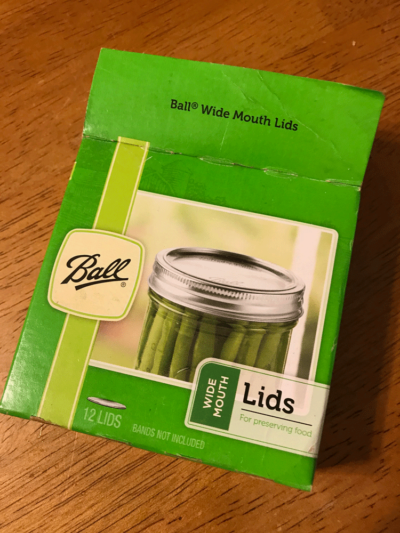
Supply List
Leftover peach pits and skins
Strawberries
Wide-mouth Pint or Half-Pint Canning Jars (cleaned and sanitized)
Small pot for sanitizing lids and rings
Canning Tool Kit (Not required but highly recommended)
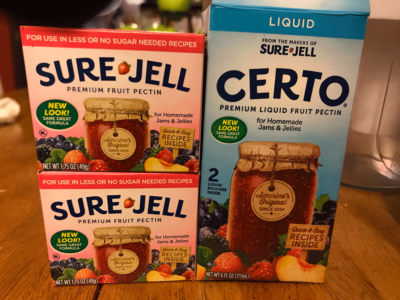
Step 1
Pour peach pits and skins into a large pot and cover 2-3” with water.
Bring to a gentle rolling boil and cook for 30-45 minutes

Step 2
Strain pits, skins, and juice through a strainer. A good fine-mesh metal strainer is a handy tool to have here, but cheesecloth will work just fine
Lesson Learned: Measure the amount of juice you have after straining. I didn’t and it made for a more difficult process in the end.
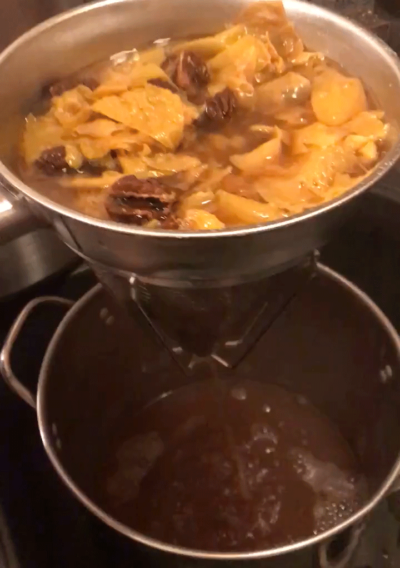
Step 3
Pour the strained peach juice back into the pot and add the strawberries. Bring to boil and puree the strawberries with a hand blender.
A normal blender will work, but a stick blender is really super convenient.
Step 4
Strain the peach/strawberry juice back through your strainer one more time to remove the strawberry seeds and pulp.
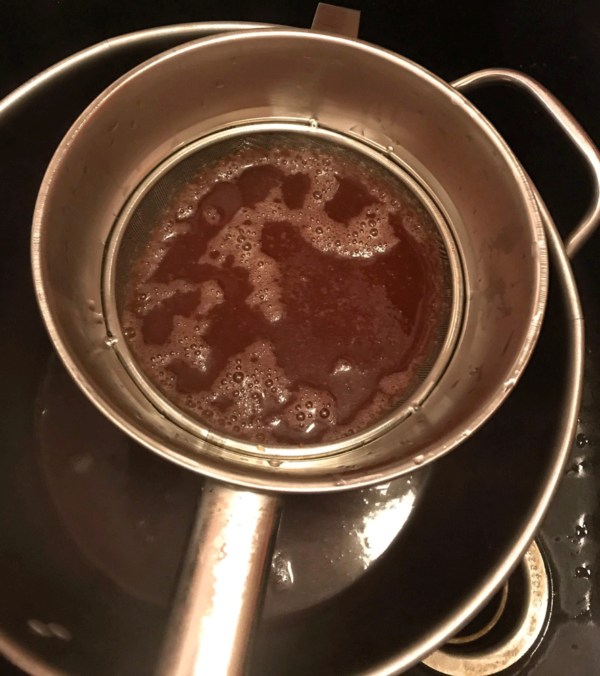
Step 5
Add Lemon Juice. I used 1/2 cup since I had so much juice.
*Lessoned learned: 1/2 cup of lemon juice was way too little for the amount of juice I had.
1 tablespoon of lemon juice to 1 Cup of juice.

Step 5
Bring peach/strawberry juice to a roiling boil. Mix in your sugar and stir until dissolved. A rule of thumb is a 1-to-1 ratio.
1 cup sugar to 1 cup juice.
Lesson Learned: Sugar not only makes jelly sweet, but it’s also what makes jelly set up properly. I learned I used too little sugar and I got syrup on my first attempt. The peach juice was already extremely sweet so I tried to counter the amount of sugar with pectin from the strawberries. I hoped the pectin in the strawberries was enough to set everything up. Wrong.

Step 7
Add butter to the boiling mixture. Butter minimizes the foaming once the mixture comes to a rolling boil.
Skim off whatever foam forms on top. I added probably 1/2 stick of butter to my jelly mixture.
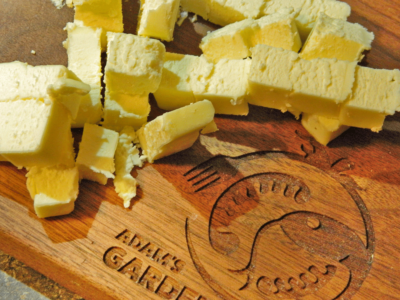
Step 8
Once at a full rolling boil add your pectin. Stirring constantly for 1 minute.
Lesson Learned: Follow the pectin to liquid ratio. I only used two liquid packets of pectin thinking the strawberries would supplement the rest with their natural pectin. Wrong.
Step 9
Do a setup test before you go any further. Pour some jelly on a chilled plate. Tilt the plate. If the jelly doesn’t run, it has been properly set up.
Lesson Learned: I recommend doing this. I didn’t do a setup test on the first try, because I thought it would fully set up once cooled in the fridge. Wrong.
Step 10
Remove pot from heat and skim off any remaining foam. Ladle your jelly mixture into clean sanitized jars.
I found pint jars were the most useful for jelly making. However, half-pint jars are great for gift giving.
Apply sanitized lids and rings.
Step 12
Remove from heat and let sit for 5 minutes. Then remove jars and place them on a towel for cooling.
Let sit undisturbed for 12 hours.
The Hard Way
Hopefully, your jelly attempt was a success and you have nice stable jelly ready for a biscuit. My first attempt was a fail. I even put a jar in the refrigerator overnight to see if that would help the jelly set. Nope. All I had was syrup. It would have been perfect if I was wanting syrup, but I use jelly more.
So I broke all my lid seals and emptied all my jars into my pot again. The sealing compound on canning lids is only made to be used once, so I had to trash all of the lids. I cleaned, scrubbed, and sanitized all my jars again.

My assumption was that I did not add enough pectin the first time. Plus I was using the liquid form for the first time as well. So, what did I do? Add More! SMH. This was before I learned I needed to add more sugar instead of pectin. I stirred in the last liquid packet I had, plus two more packs of powdered pectin I had in the cabinet. I brought everything to another rolling boil for another minute. Once again, I failed to do a setup test after I added the pectin. Mistake.
So I jarred the mixture, sealed, canned and water bathed everything once more. I removed all my jars and let them cool for another 24 hours. I even put another jar in the refrigerator in hopes it would turn to jelly again. I checked it again the next day and what did I have…more syrup. Crap.
At this point, I was ready to accept partial defeat. I had emptied and cleaned my jar twice. I had also wasted two sets of canning lids. Maybe I’ll just stick with 30 jars of syrup. Now I’ll admit, it was good syrup. It would have gone perfectly with pancakes, waffles, or ice cream. The taste was spot-on. However, I’m stubborn and refused to yield to just syrup. I wanted jelly.
So I emptied all my jars and cleaned and sanitized them for a third try. This is where my stubbornness and irritation may have gotten the better of me. I went and bought two more jars of powdered pectin. This stuff was going to set even if it was concrete in the end. By this time I had talked to a fellow gardening friend and she suggested I might need to add some more sugar. So I thought, what the hell do I have to lose besides 30-jars of syrup? One person can only eat so many pancakes.
I brought everything to boil again and added two whole jars of pectin and another 6-cups of sugar. I brought everything to another rolling boil for another minute. This time I noticed the jelly starting to form on the sides of the pot. That was a promising sign.
I remembered to do a setup taste on my third attempt, so I spooned some jelly out onto a chilled plate. I tilted the plate slightly and nothing ran. I started to get excited. I jarred, sealed, and water bathed all my jars for a final time. Each time I emptied and filled my jars and pot with jelly, I lost sacrificed a small amount. A spatula can only get so much. By the third attempt, I had lost almost 3 jars worth of jelly to the “process”.
I removed my jars from the water bath once more and let them cool for another 24 hours. I checked them the next day and my jelly had finally set up. However, due to my over-ambitiousness in adding pectin, my jelly ended up with a slightly firmer setup, than what I was expecting. Although the taste was on-point, It did make for a more difficult spread on a piece of toast. I did, however, have jelly. And I was happy with my third try and learned some valuable lessons for the next time.


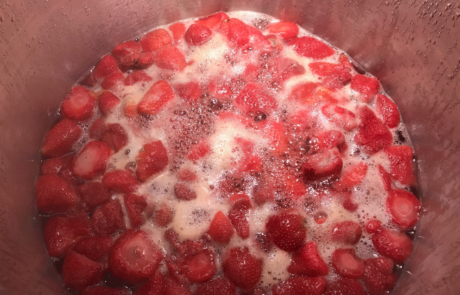




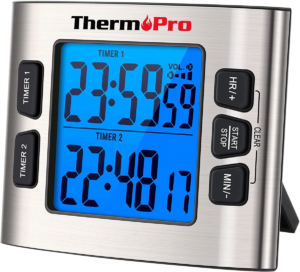

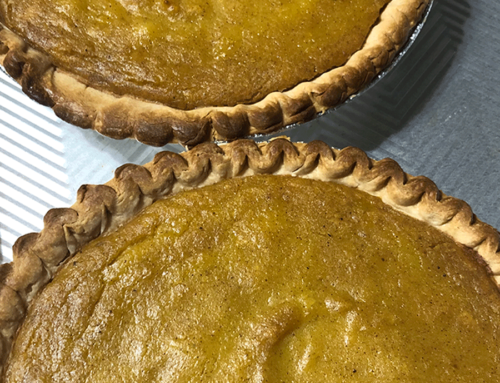
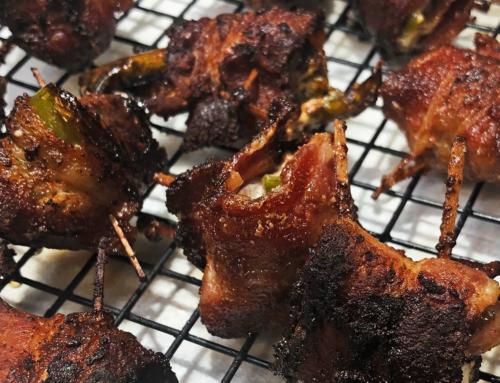


[…] you want to go further, you can use the peach pits and skins to make peach jelly. Here’s my recipe. If you have a dehydrator, you can save the tomato skins and make tomato […]
[…] SAVE THOSE PITS & SKINS TO MAKE JELLY! […]